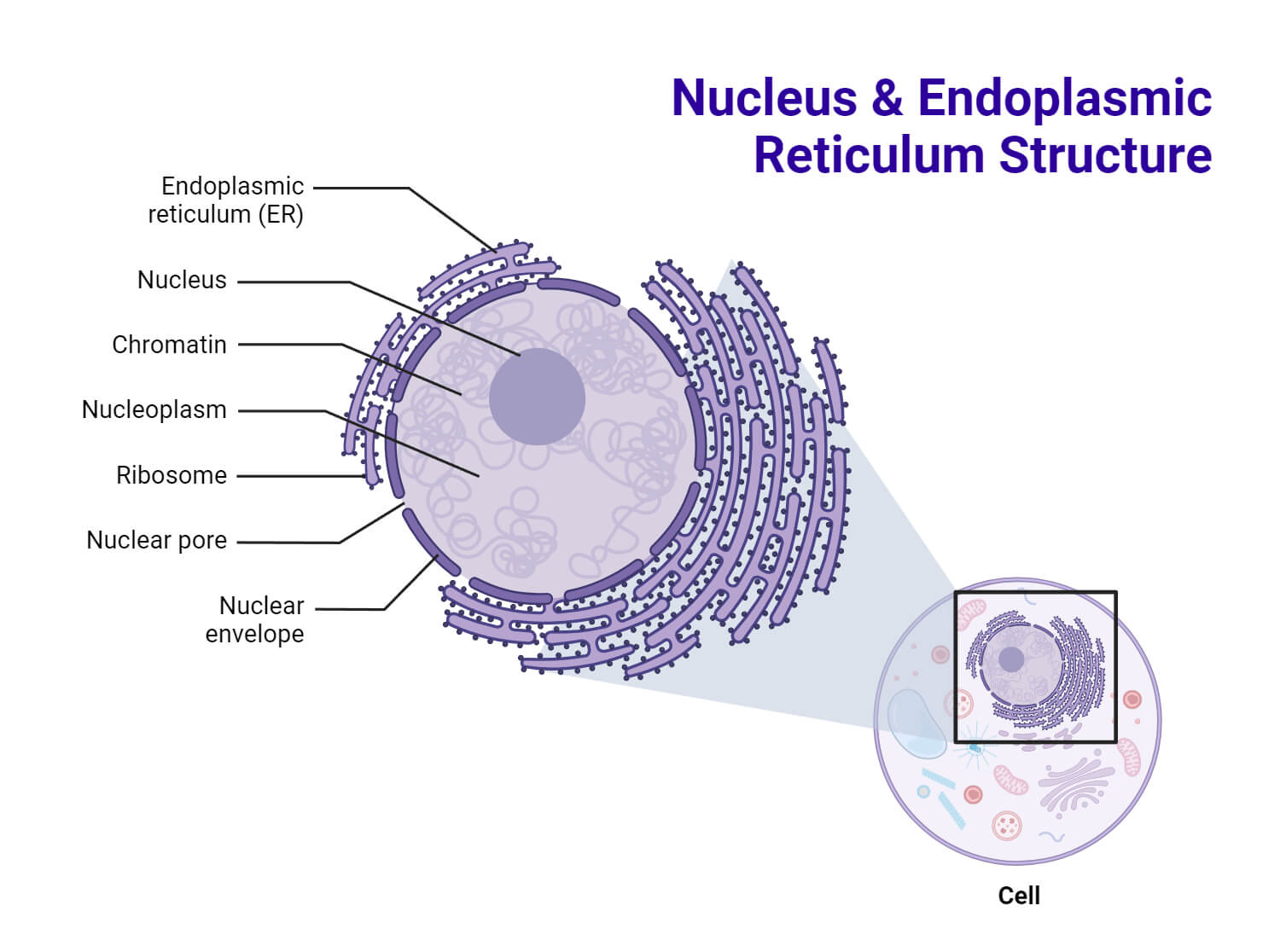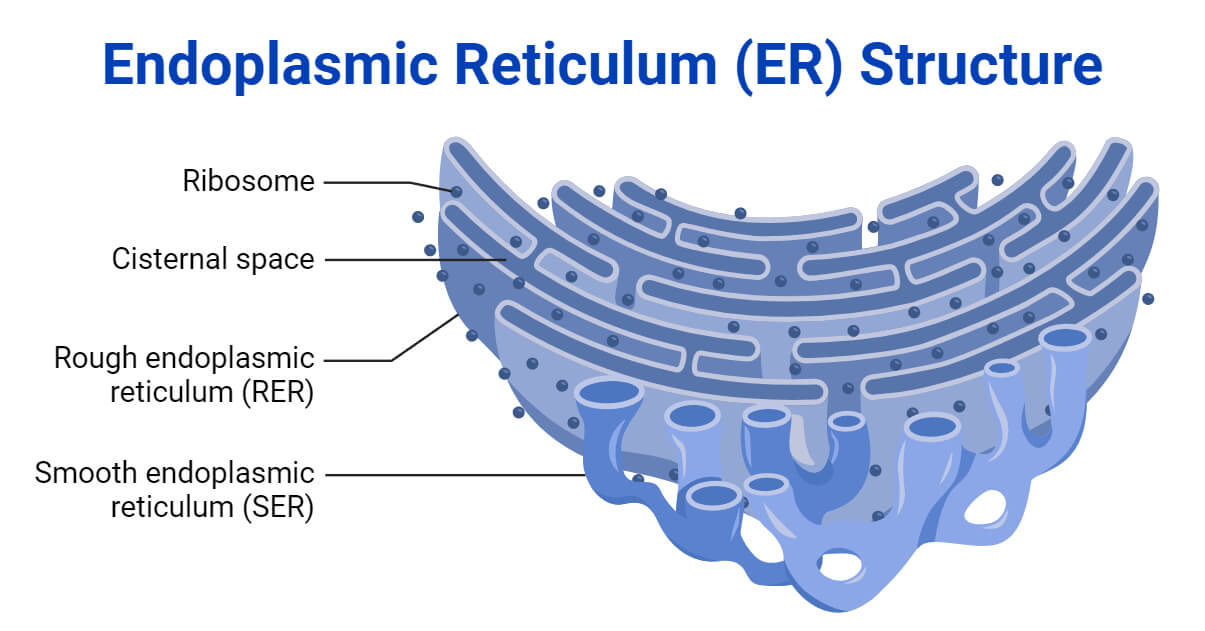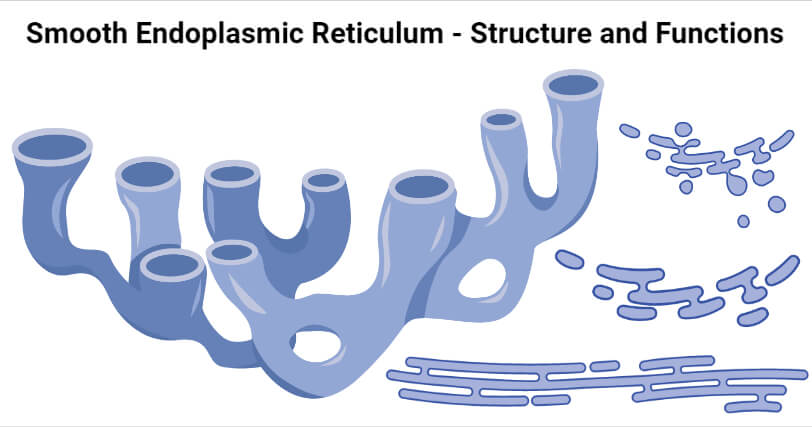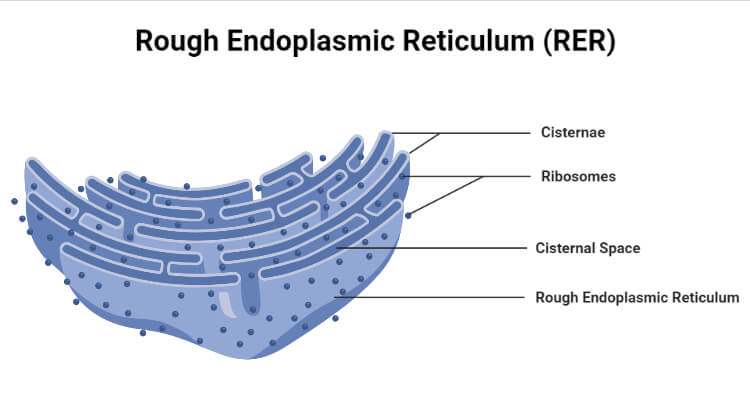- Within the cytoplasm of most animal cells is an extensive network (reticulum) of membrane-limited channels, collectively called the endoplasmic reticulum (or ER).
- The endoplasmic reticulum is a name derived from the fact that in the light microscope it looks like a “net in the cytoplasm.”
- The endoplasmic reticulum is only present in the eukaryotic cells. However, the occurrence of the endoplasmic reticulum varies from cell to cell.
- For example, the erythrocytes (RBC), egg and embryonic cells lack in the endoplasmic reticulum.
- Some portion of ER membranes remains continuous with the plasma membrane and the nuclear envelope.
- ER may be rough or smooth. The outer surface of rough ER has attached ribosomes, whereas smooth ER does not have attached ribosomes.
- The endoplasmic reticulum acts as secretory, storage, circulatory and nervous system for the cell. It is also the site of the biogenesis of cellular membranes.

Interesting Science Videos
Structure of Endoplasmic Reticulum (ER)
- The membrane of the endoplasmic reticulum is 50 to 60 Aº thickness and fluid-mosaic like the unit membrane of the plasma membrane.
- The membranes of the endoplasmic reticulum are found to contain many kinds of enzymes that are needed for various important synthetic activities. The most important enzymes are the stearases, NADH-cytochrome C reductase, NADH diaphorase, glucose-6-phosphatase, and Mg++ activated ATPase.
- The membrane of endoplasmic reticulum remains continuous with the membranes of the plasma membrane, nuclear membrane, and Golgi apparatus.
- The cavity of the endoplasmic reticulum is well developed and acts as a passage for the secretory products.

The endoplasmic reticulum may occur in the following three forms:
- Lamellar form or cisternae
- Vesicular form or vesicle and
- Tubular form or tubules.
The Cisternae
- RER usually exists as cisternae that occur in those cells which have synthetic roles as the cells of the pancreas, notochord, and brain.
- The cisternae are long, flattened, sac-like, unbranched tubules having a diameter of 40 to 50 μm.
- They remain arranged parallelly in bundles or stakes.
The Vesicles
- The vesicles are oval; membrane-bound vacuolar structures having a diameter of 25 to 500 μm.
- They often remain isolated in the cytoplasm and occur in most cells but especially abundant in the SER.
The Tubules
- The tubules are branched structures forming the reticular system along with the cisternae and vesicles.
- They usually have a diameter from 50 to 190 μm and occur almost in all the cells.
- Tubular form of ER is often found in SER and is dynamic in nature, i.e., it is associated with membrane movements, fission and fusion between membranes of cytocavity network.
Types of Endoplasmic Reticulum (ER)
1. Smooth Endoplasmic Reticulum
- They are also called as the agranular endoplasmic reticulum.
- This type of endoplasmic reticulum possesses smooth walls because the ribosomes are not attached to its membranes.
- The smooth type of endoplasmic reticulum occurs mostly in those cells, which are involved in the metabolism of lipids (including steroids) and glycogen. Eg. adipose cells, interstitial cells, glycogen storing cells of the liver, conduction fibers of heart, spermatocytes, and leucocytes.

2. Rough Endoplasmic Reticulum
- It possesses rough walls because the ribosomes remain attached to its membranes.
- On their membranes, rough ER (RER) contains certain ribosome specific, transmembrane glycoproteins, called ribophorins I and II, to which are attached the ribosomes while engaged in polypeptide synthesis.
- The rough type of endoplasmic reticulum is found abundantly in those cells which are active in protein syntheses such as pancreatic cells, plasma cells, goblet cells, and liver cells.

Functions of Endoplasmic Reticulum (ER)
- Functions of smooth ER include lipid metabolism (both catabolism and anabolism; they synthesize a variety of phospholipids, cholesterol, and steroids).
- Glycogenolysis (degradation of glycogen; glycogen being polymerized in the cytosol).
- Drug detoxification (by the help of the cytochrome P-450).
- The endoplasmic reticulum provides an ultrastructural skeletal framework to the cell and gives mechanical support to the colloidal cytoplasmic matrix.
- The exchange of molecules by the process of osmosis, diffusion and active transport occurs through the membranes of the endoplasmic reticulum.
- The endoplasmic reticulum is the main component of the endomembrane system, also called the cytoplasmic vacuolar system or cytocavity network.
- The endoplasmic membranes contain many enzymes that perform various synthetic and metabolic activities. Further, the endoplasmic reticulum provides an increased surface for various enzymatic reactions.
- The endoplasmic reticulum acts as an intracellular circulatory or transporting system.
- As a growing secretory polypeptide emerges from the ribosome, it passes through the RER membrane and gets accumulated in the lumen of RER. Here, the polypeptide chains undergo tailoring, maturation, and molecular folding to form functional secondary or tertiary protein molecules.
- RER pinches off certain tiny protein-filled vesicles which ultimately get fused to cis Golgi.
- The ER membranes are found to conduct intra-cellular impulses. For example, the sarcoplasmic reticulum transmits impulses from the surface membrane into the deep region of the muscle fibers.
- The ER membranes form the new nuclear envelope after each nuclear division.
- The SER contains several key enzymes that catalyze the synthesis of cholesterol which is also a precursor substance for the biosynthesis of two types of compounds— the steroid hormones and bile acids.
- RER also synthesize membrane proteins and glycoproteins which are cotranslationally inserted into the rough ER membranes. Thus, the endoplasmic reticulum is the site of the biogenesis of cellular membranes.
References
- Verma, P. S., & Agrawal, V. K. (2006). Cell Biology, Genetics, Molecular Biology, Evolution & Ecology (1 ed.). S .Chand and company Ltd.
- Alberts, B. (2004). Essential cell biology. New York, NY: Garland Science Pub.
- Kar,D.K. and Halder,S. (2015). Cell biology genetics and molecular biology.Kolkata, New Central Book Agency
- Alberts, Bruce, Johnson, Alexander, Lewis, Julian, Raff, Martin, Roberts, Keith, and Walter, Peter (2008). Molecular Biology of the Cell (Fifth Edition), (Garland Science, New York), p. 781
- https://www.thoughtco.com/endoplasmic-reticulum-373365.

very very helpful.
thank you very much
It’s very nice and very useful for me, thank you
Very helpful, thanks.